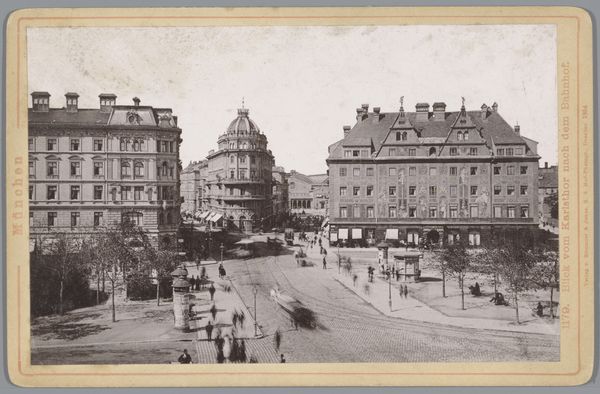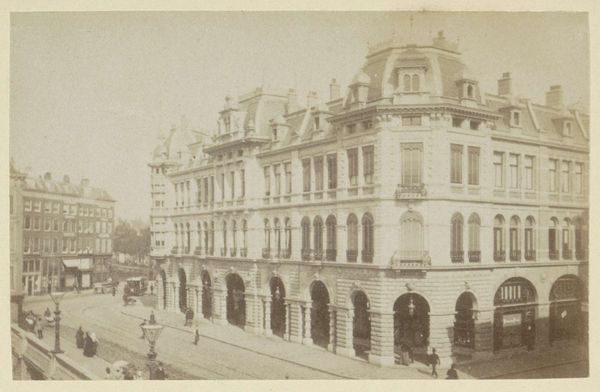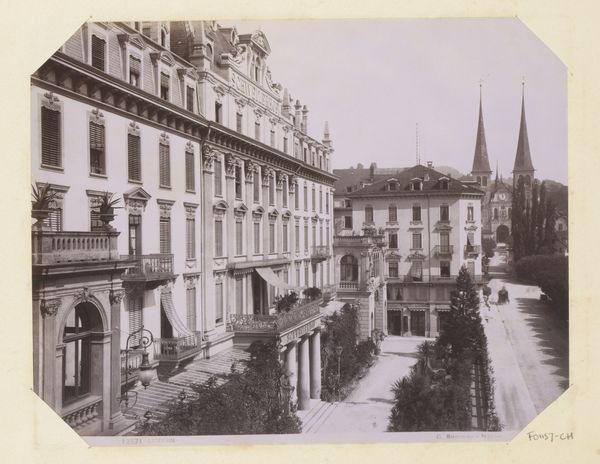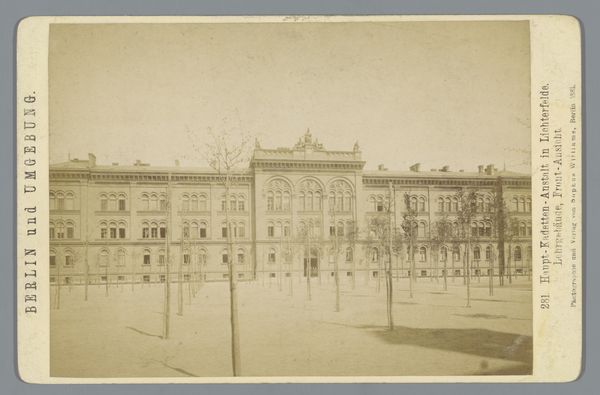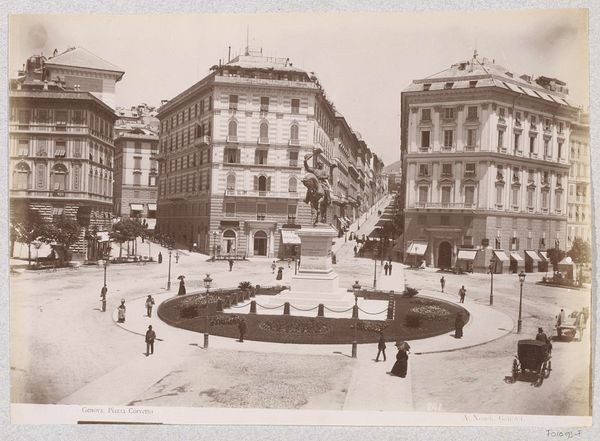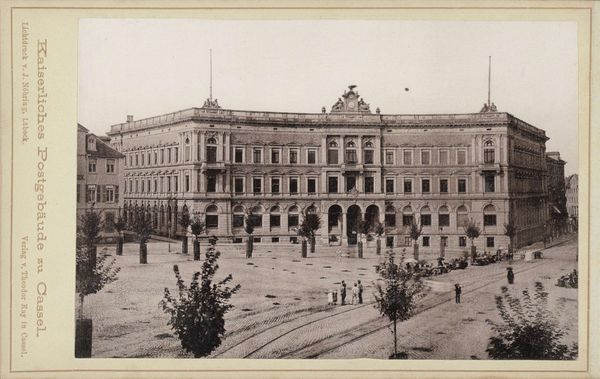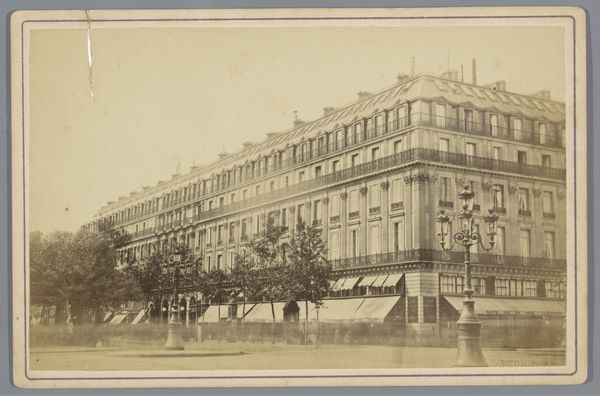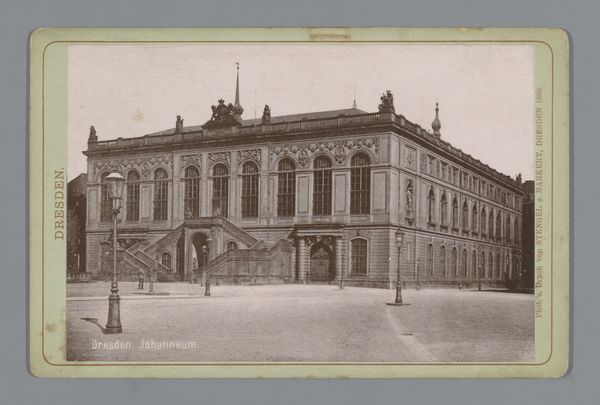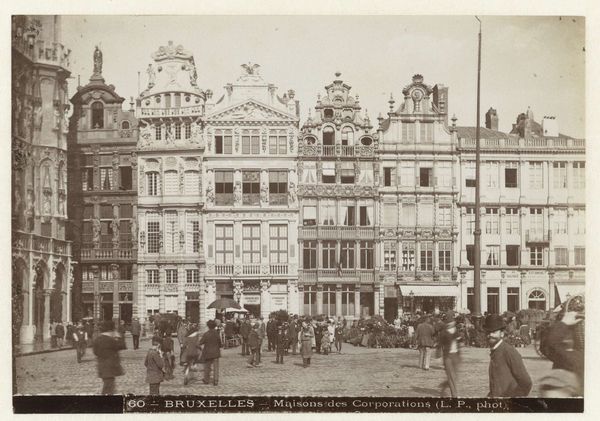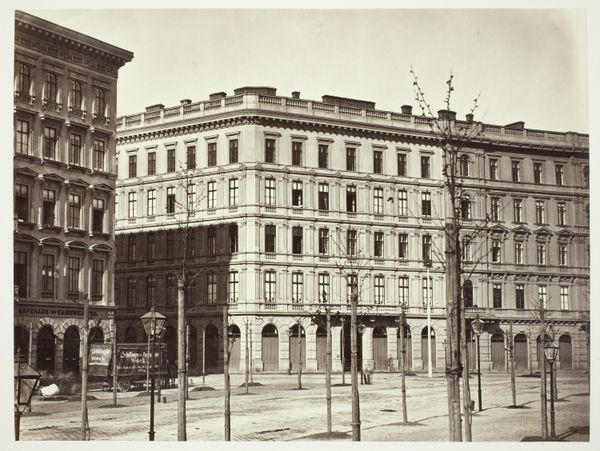
print, photography, gelatin-silver-print
#
print photography
# print
#
photography
#
historical photography
#
gelatin-silver-print
#
cityscape
#
realism
Dimensions: height 115 mm, width 164 mm
Copyright: Rijks Museum: Open Domain
Curator: What strikes me most immediately about this image is the stillness. It feels almost like a stage set, doesn't it? A carefully arranged tableau vivant. Editor: Precisely. Let’s consider Gustav Salzer’s 1903 gelatin silver print, titled "Gezicht op de Leopoldsplatz in Baden-Baden"—a cityscape that certainly captures more than just architectural details. This was Baden-Baden, after all: a city actively cultivating an image as a refined destination, heavily dependent on its reputation for leisure and aristocracy. Curator: I am especially drawn to the domed building. It's obviously quite prominent; how do you think it speaks to Baden-Baden as a status symbol in the 1900's? Editor: That dome is visually reminiscent of Imperial power. In addition to echoing those ideals, this hotel symbolized modernity—internationality and the influx of wealth associated with that era, all reflected in its design. Curator: The muted tones seem to add to this effect by stripping away the color, thus focusing attention instead to pure form and structural qualities... There is such formality present despite what appears to be a regular street! Editor: I think that muted palette contributes in important ways. The choice to use this particular monochromatic photographic medium highlights texture—surface against surface. These kinds of choices often invoke nostalgia as the printing technique aged; photography evolved in technique in short time spans. As realism was often understood to be a mirror to actual social conditions, its nostalgic use contributed an element of sentimental idealization, Curator: So it's both documentation and interpretation at the same time? Almost staged, even if unintentional, as many photography experiments of the time. Editor: Absolutely. A carefully mediated vision reflecting turn-of-the-century ideals, anxieties, and class aspirations within a single, seemingly straightforward cityscape, made into the kind of iconography for which photography can sometimes stand-in. Curator: Yes. It becomes more complex the longer we discuss, layering historical understanding and deeper symbolisms atop what seems a mundane moment, made extraordinary through time. Editor: Exactly, and the emotional weight and cultural relevance of this moment become only more potent and vivid with age.
Comments
No comments
Be the first to comment and join the conversation on the ultimate creative platform.

